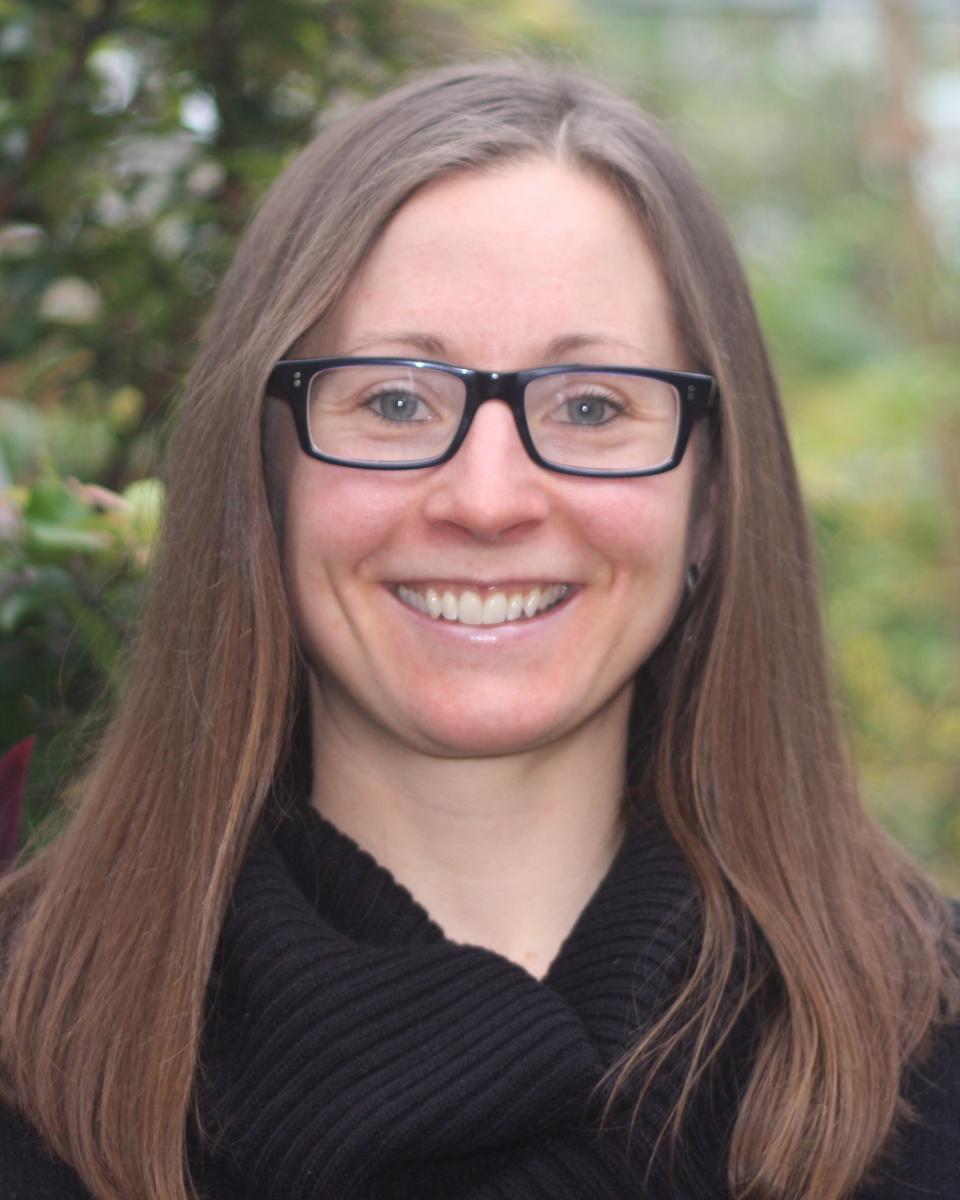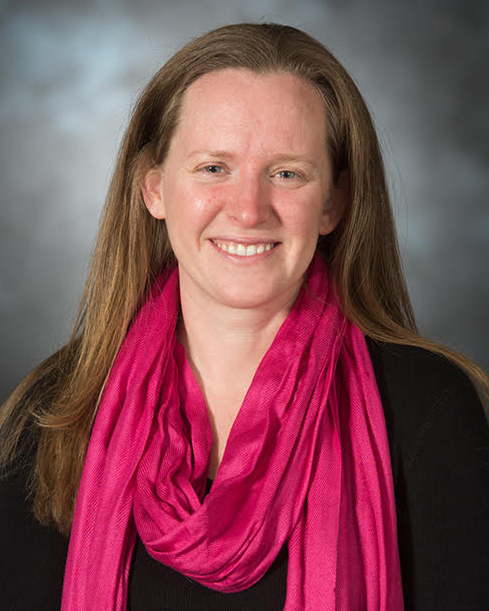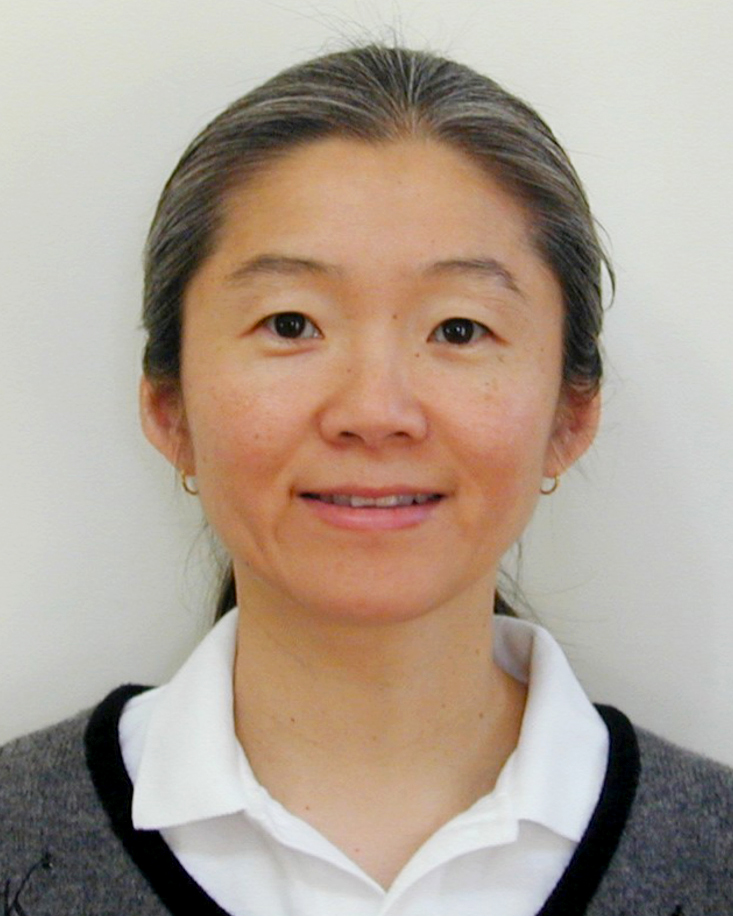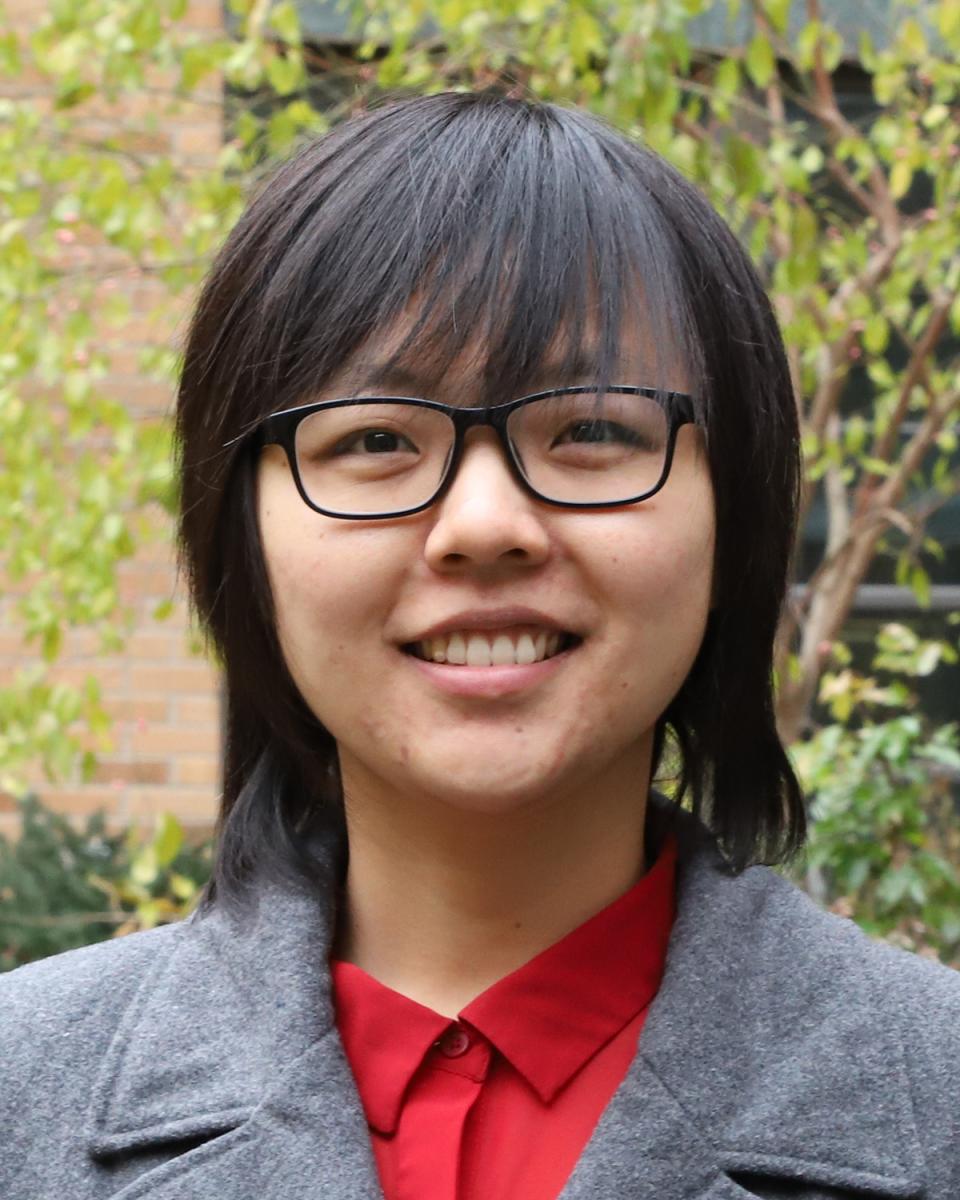
Katie Greenham
Post-doctoral Researcher, School of Biological Sciences, Dartmouth College, Hanover, New Hampshire
Title: The role of time in physiological and transcriptomic responses to abiotic stress
Greenham is a molecular biologist whose research interests are to explore the consequences of internal timekeeping on plant fitness. She uses circadian guided network approaches to combine temporal studies of abiotic stress response to identify the time of day dependent markers of stress tolerance. As an NSF National Plant Genomes Initiative Postdoctoral Fellow, she applied co-expression network analysis to integrate temporal changes in transcriptomic and physiological responses to drought in the crop Brassica rapa. This study revealed early indicators of drought perception and the importance of time when assessing drought response. Greenham received her bachelor’s degree at Queen’s University in Kingston, Ontario. She completed her doctorate with Mark Estelle, Division of Biological Sciences distinguished professor and chair at University of California San Diego, where she focused on the role of auxin signaling during seedling development. Greenham is currently a post-doctoral researcher in the lab of Rob McClung, professor of biological sciences at Dartmouth College She can be found early most mornings at the local CrossFit gym or out on her bike.

Candice Hirsch
DuPont Young Professor and McKnight Land Grant Professor, Department of Agronomy and Plant Genetics, University of Minnesota
Title: Insights into the genotype-by-environment interaction enabled through phenomics
Hirsch received her doctorate in plant breeding and plant genetics from the University of Wisconsin-Madison and conducted postdoctoral research at Michigan State University. Her research involves the integration of big data including high throughput genome and transcriptome sequencing, high throughput phenotyping, and extensive environmental measurements with the end goal of produce more food on less land while mitigating risk to farmers associated with environmental conditions.

Diego Jarquin
Research Assistant Professor, Department of Agronomy and Horticulture, University of Nebraska–Lincoln
Title: Environmental, Phenotypic (Imagery) and Genomic Data for Prediction of Crop Performance Trials in complex Scenarios.
Diego Jarquin earned his doctoral degree in statistics from Colegio de Postgraduados and post-doctoral training from University of Alabama–Birmingham and Nebraska. Jarquin’s research interests are centered around statistical learning methods for predicting complex traits especially problems that allow the inclusion of high dimensional genomic and environmental information and their first order interactions. One of his main areas of expertise is the study of the genotype × environment interaction in prediction problems. He has been involved in the development of prediction models and their applications for the analysis of several crops (soybean, wheat, cotton, maize, linseed, sugar cane, and chickpea) and human data as well. Currently, he collaborates with the Genomes to Fields Consortium (G2F) by performing statistical analyses for the G×E trials. This initiative evaluates around 1,400 maize hybrids each year at 24-30 locations across the United States and two locations in Canada and records environmental information every 15 minutes at each location. His work consists of taking advantage of the high-dimensional nature of the information by incorporating different sources (besides genomics) to enhance predictive ability under a broad set of environmental conditions and help breeders in the selection process. Part of his research focuses on optimization of training-testing relationships for Genomic Selection (GS) and the design of pipelines to cope with high dimensional data sets through supercomputing resources using multi-parallel arrays. Some of his developments have been adopted by CIMMYT in their routine analyses of multi-environment trials established for breeding purposes. Jarquin is the author on 21 peer-reviews publications, a co-PI on two grants (University of Nebraska–Lincoln internal competition - $223K, USDA-AFRI – $490K), and he has received 17 invitations to present his research.

Laura Mayor
Molecular Breeding Scientist, DuPont Pioneer
Title: New breeding Technologies and their implication in commercial hybrid development
Mayor completed her bachelor’s degree in agronomy and master of science in genetics at the University of Rosario in Argentina. She earned her doctorate at Iowa State University in plant breeding working on the genetic bases of prolificacy in maize. She started at DuPont Pioneer as a Molecular Breeding Scientist in corn for the southeast United States and moved into sorghum breeding in 2011. Since then, she established a molecular breeding strategy for this crop and took over responsibilities for the sorghum breeding program established in Manhattan, Kansas. Over the last couple of years, her responsibilities were extended to develop breeding strategy and planning for eastern Kansas and the High Plains markets covering the Manhattan, Kansas and Plainview, Texas research stations. The major focus of the evaluation zone are improved yield, stalk strength, sugarcane aphid tolerance and cold tolerance using new phenotyping and molecular technologies available.

Mark Sorrells
Professor, Plant Breeding and Genetics, Cornell University
Title: Plant Breeding in the 21st Century: Molecular Breeding & High Throughput Phenotyping
Sorrells specializes in plant breeding methodologies and strategies and develops new varieties of wheat, oats, and barley. Current research topics include genomic selection, high throughput phenotyping and organic grains breeding. He earned his bachelor’s in botany in 1973 and Master of Science in plant and soil science in 1975 at Southern Illinois University, Carbondale. He earned his doctorate in plant breeding and plant genetics in 1977 at the University of Wisconsin, Madison. He joined the Department of Plant Breeding and Biometry in 1978 and has been a full professor of plant breeding since 1991. Sorrells was Chair of the Department of Plant Breeding and Genetics from 2006 to 2014. Sorrells has authored or co-authored more than 270 peer-reviewed publications. He is a Fellow of the Crop Science Society of America and the American Association for the Advancement of Science. Awards include the Crop Science Society of America Outstanding Research Award, SUNY Chancellor’s Award for Excellence in Faculty Service, and the Cornell College of Agriculture Outstanding Accomplishments in Applied Research.

Tai-ping Sun
Professor, Biology, Duke University, Durham, North Carolina
Title: DELLAcate Balance for Plant Growth by Sugar Modifications
Sun is a professor of Biology at Duke University in Durham, North Carolina. She received her doctorate in biochemistry and genetics from Duke University, and was a post-doctoral scholar at the University of Oxford in Oxford, United Kingdom and Harvard University in Cambridge, Massachusetts. She is a reviewing editor of The Plant Cell and a contributing faculty member in FACULTY OF 1000 BIOLOGY. Sun received the Distinguished Research Award (Silver Medal) from the International Plant Growth Substances Association in 2010. Thomson Reuters also ranked her among the top 1 percent most cited researchers in Plant/Animal Biology in 2014-2016. Sun's research focuses on elucidating the sites and regulatory mechanisms of plant hormone gibberellin (GA) biosynthesis as well as the conserved molecular events of GA perception and its signaling pathway. Her research identified DELLA proteins, which are master growth repressors whose stability is controlled by GA and its nuclear receptor. DELLAs have emerged as central regulators that integrate internal and external signals via direct protein-protein interactions with key transcription factors (TFs). Her lab recently found that these crucial DELLA-TF interactions are oppositely regulated by two novel sugar modifications, revealing a new paradigm in linking metabolic status to gene expression and cell growth.

Emma Jobson
Student Speaker – Montana State University
Title: Development and Characterization of Novel Reduced Height Alleles in Wheat
The dramatic yield increases in wheat during the Green Revolution were largely possible due to the incorporation of mutant forms of the Reduced Height (Rht) genes. Since then, the two most common semi-dwarfing forms of the gene, Rht-B1b and Rht-D1b have been incorporated into the majority of modern wheat cultivars. Despite the impressive yield increases associated with these genes, they are also associated with decreased emergence in arid conditions, and there is limited allelic diversity beyondRht-B1b and Rht-D1b. As the global climate changes it is important to identify forms of this gene which are better suited for arid climates while maintaining yield. Using EMS mutagenesis, we have greatly increased the allelic diversity of Rht-1 by successfully identifying 16 new Rht-1 mutations, including a nonsense mutation in each genome. The potential impact of each mutation was characterized via predictive software based on amino acid changes, coleoptile length, and responsiveness to gibberellic acid (GA). Based on these parameters, we identified six mutations which appeared to have an intermediary effect between the tall and current semi-dwarfing varieties. We are now using these mutations as part of a crossing plan with adapted spring and winter wheat varieties.

Aaron Kusmec
Student Speaker
Title: Distinct Genetic Architectures for Phenotype Means and Plasticities in Zea mays
Phenotypic plasticity describes the phenotypic variation of a trait when a genotype is exposed to different environments. Understanding the genetic control of phenotypic plasticity in crops such as maize is of paramount importance for maintaining and increasing yields in a world experiencing climate change. Here, we report the results of genome-wide association analyses of multiple phenotypes and two measures of phenotypic plasticity in the maize nested association mapping (US-NAM) population grown in multiple environments and genotyped with ~2.5 million single nucleotide polymorphisms (SNPs). We show that across all traits the candidate genes for mean phenotype values and plasticity measures form structurally and functionally distinct groups. Such independent genetic control suggests that breeders will be able to select semi-independently for mean phenotype values and plasticity, thereby generating varieties with both high mean phenotype values and levels of plasticity that are appropriate for the target performance environments.

Mitchell Schumann
Student Speaker – Department of Soil and Crop Science, Texas A&M University, College Station
Title: Genomic Selection for fiber quality traits in USDA obsolete cultivar collection
US cotton breeding efforts must keep pace with current demands for superior cotton fiber quality if US cotton is to remain competitive in the global textile market. These demands come from the every-improving man-made fibers and improvements in spinning technologies, requiring longer and stronger cotton fiber. Global climate change impacts irrigation water availability and thus leads to an increase in dryland upland cotton production in Texas and elsewhere. Upland cotton fibers produced without optimum moisture are significantly shorter which impacts price received and the utility of these fibers. As a result, farmers are looking for cultivars that can produce superior fiber quality under non-irrigated cultivation. The first step in this process is to identify new sources of fiber quality alleles. Current phenotyping advancements, such as High Volume Instrumentation (HVI) and Advanced Fiber Information System (AFIS), allow breeders to detect superior fiber quality. However, these technologies are recent in the scope of over a hundred years of scientific breeding efforts in US cotton. Due to the narrowness of cotton germplasm, it is believed that obsolete cultivars can be implemented into modern breeding programs without large yield losses due to linkage drag. To tap into potentially overlooked fiber quality alleles, a training population was built using cultivars from the U.S cotton obsolete variety collection, and other materials with known fiber quality alleles. Population structure and genetic diversity analysis was performed on this population, and a model was built to most effectively predict phenotype from genotypic data within the U.S cotton obsolete variety collection.

Ying Ren
Student Speaker – Department of Agronomy and Horticulture, University of Nebraska–Lincoln
Title: Breeding of Quality Protein Popcorn
Quality Protein Maize (QPM), a modified (hard kernel) version of the high-lysine opaque-2 (o2) mutant was developed at the international maize and wheat improvement center (CIMMYT) in the 1980s and 90s. In this study, we introgressed o2 along with QPM modifier genes into popcorn by making F1 crosses between several elite popcorn lines and three QPM lines (CML 154Q, Tx807, K0326Y). After screening for o2 in-gene marker availability, 11 crosses were used for generation advancement. Two continuous backcrossing generations were carried out for rapid accumulation of the popcorn genome. BC2F2 population from selfing BC2 with O2o2 genotype were analyzed phenotypically on the lightbox where kernels with prominent/acceptable modification were selected to be selfed for generation of BC2F3 and BC2F4. Genotyping and SDS-PAGE of popcorn-like vitreous kernels in four promising BC2F3, BC2F4 generations confirmed the presence of completely modified o2 mutants. Lysine content were measured and compared between both parents and BC2F4 individuals with three biological replicates via HPLC. There was a 0.68-fold increase in protein-bound lysine and a 5.48-fold increase in free lysine respectively across 6 different introgressions compared with corresponding popcorn parents. Along with results of preliminary popping analysis, we provided proof of concept that Quality Protein Popcorn is achievable. Our breeding scheme for introgressing the o2 allele and modifier genes from QPM dent corn into popcorn background with restored modification provides valuable insight for other QPM conversion projects as well as highlighting the feasibility of transferring traits from dent corn into popcorn.